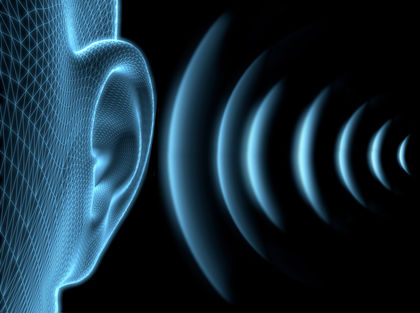- Home
- Medical news & Guidelines
- Anesthesiology
- Cardiology and CTVS
- Critical Care
- Dentistry
- Dermatology
- Diabetes and Endocrinology
- ENT
- Gastroenterology
- Medicine
- Nephrology
- Neurology
- Obstretics-Gynaecology
- Oncology
- Ophthalmology
- Orthopaedics
- Pediatrics-Neonatology
- Psychiatry
- Pulmonology
- Radiology
- Surgery
- Urology
- Laboratory Medicine
- Diet
- Nursing
- Paramedical
- Physiotherapy
- Health news
- Fact Check
- Bone Health Fact Check
- Brain Health Fact Check
- Cancer Related Fact Check
- Child Care Fact Check
- Dental and oral health fact check
- Diabetes and metabolic health fact check
- Diet and Nutrition Fact Check
- Eye and ENT Care Fact Check
- Fitness fact check
- Gut health fact check
- Heart health fact check
- Kidney health fact check
- Medical education fact check
- Men's health fact check
- Respiratory fact check
- Skin and hair care fact check
- Vaccine and Immunization fact check
- Women's health fact check
- AYUSH
- State News
- Andaman and Nicobar Islands
- Andhra Pradesh
- Arunachal Pradesh
- Assam
- Bihar
- Chandigarh
- Chattisgarh
- Dadra and Nagar Haveli
- Daman and Diu
- Delhi
- Goa
- Gujarat
- Haryana
- Himachal Pradesh
- Jammu & Kashmir
- Jharkhand
- Karnataka
- Kerala
- Ladakh
- Lakshadweep
- Madhya Pradesh
- Maharashtra
- Manipur
- Meghalaya
- Mizoram
- Nagaland
- Odisha
- Puducherry
- Punjab
- Rajasthan
- Sikkim
- Tamil Nadu
- Telangana
- Tripura
- Uttar Pradesh
- Uttrakhand
- West Bengal
- Medical Education
- Industry
Indian-American researcher uses sound waves to control brain cells

An Indian American researcher has developed a new sound waves based technique- dubbed as sonogenetics, to manipulate neuron and other cells in the body. In a first, this researcher from Salk Institute for Biological Studies in California has enabled to selectively activate brain, heart, muscle and other cells using ultrasonic sound waves.
The new method - which uses the same type of waves used in medical sonograms - may have advantages over the light-based approach - known as optogenetics - particularly when it comes to adapting the technology to human therapeutics.
"In contrast to light, low-frequency ultrasound can travel through the body without any scattering," Sreekanth Chalasani, assistant professor in Salk's molecular neurobiology laboratory informed.
"This could be a big advantage when you want to stimulate a region deep in the brain without affecting other regions," adds Stuart Ibsen, post-doctoral fellow in the Chalasani lab.
So far, sonogenetics has only been applied to C. elegans neurons.
"The real prize will be to see whether this could work in a mammalian brain," Chalasani pointed out.
His group has already begun testing the approach in mice.
"When we make the leap into therapies for humans, I think we have a better shot with noninvasive sonogenetics approaches than with optogenetics," he emphasised in a paper appeared in the journal Nature Communications.
Chalasani obtained his PhD from University of Pennsylvania. He then did his post-doctoral research in the laboratory of Dr Cori Bargmann at the Rockefeller University in New York.
In optogenetics, researchers add light-sensitive channel proteins to neurons they wish to study.
By shining a focused laser on the cells, they can selectively open these channels, either activating or silencing the target neurons.
The new method - which uses the same type of waves used in medical sonograms - may have advantages over the light-based approach - known as optogenetics - particularly when it comes to adapting the technology to human therapeutics.
"In contrast to light, low-frequency ultrasound can travel through the body without any scattering," Sreekanth Chalasani, assistant professor in Salk's molecular neurobiology laboratory informed.
"This could be a big advantage when you want to stimulate a region deep in the brain without affecting other regions," adds Stuart Ibsen, post-doctoral fellow in the Chalasani lab.
So far, sonogenetics has only been applied to C. elegans neurons.
"The real prize will be to see whether this could work in a mammalian brain," Chalasani pointed out.
His group has already begun testing the approach in mice.
"When we make the leap into therapies for humans, I think we have a better shot with noninvasive sonogenetics approaches than with optogenetics," he emphasised in a paper appeared in the journal Nature Communications.
Chalasani obtained his PhD from University of Pennsylvania. He then did his post-doctoral research in the laboratory of Dr Cori Bargmann at the Rockefeller University in New York.
In optogenetics, researchers add light-sensitive channel proteins to neurons they wish to study.
By shining a focused laser on the cells, they can selectively open these channels, either activating or silencing the target neurons.
Next Story


